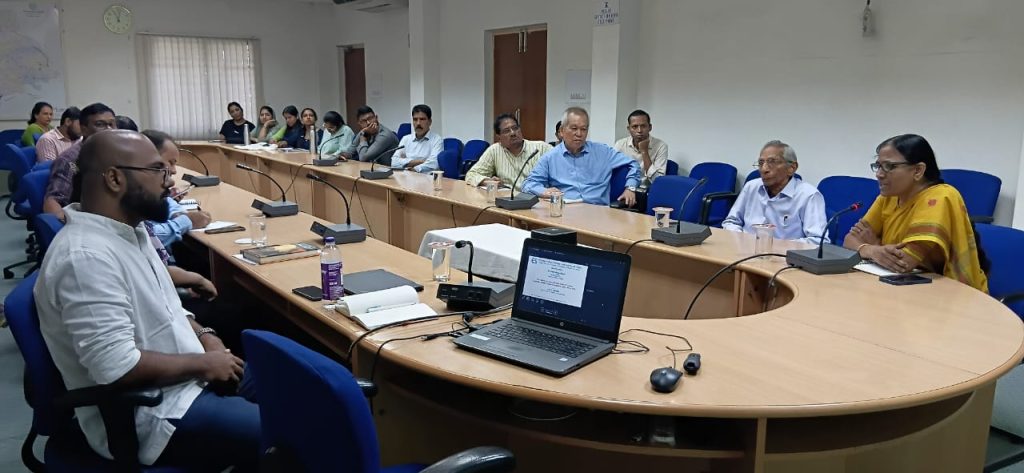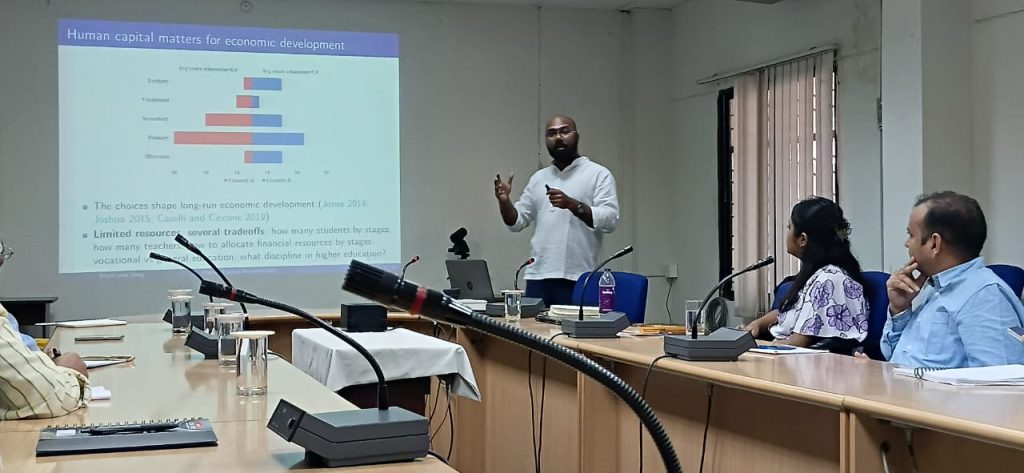

CESS hosted an Invited Lecture by Dr. Nitin Kumar Bharti, Assistant Professor at the UWA Business School, University of Western Australia, on “The Making of China and India in the 21st Century: Long-Run Human Capital Accumulation from 1900 to 2020” on 10th September 2025. The lecture was chaired by Prof. E. Revathi, Director of CESS, and attended by Prof. C.H. Hanumantha Rao, Founder Member, CESS.
Dr. Nitin Kumar Bharti’s presentation focused on how education policies and human capital formation in India and China over the past 120 years have shaped their long-run economic development. He compared the two countries across different phases—colonial and pre-independence (1900–1950), closed economy (1950–1980), and post-liberalization (1980–2020)—highlighting the impact of policy choices in education.
The lecture identified three core dimensions:
- Bottom-Up vs. Top-Down Expansion – China followed a staged approach, expanding primary education first, then secondary, and later tertiary, while India focused on secondary and tertiary education earlier, with delayed emphasis on primary education post-1990.
- Diversification of Education – China developed a robust vocational system and produced a higher share of engineers, whereas India remained skewed towards humanities and general degrees, with limited vocationalization. China looks more like a `land of engineers’ (20-30%) over the last 100 years, compared to India in recent years, with 15% of engineering graduates.
- Quantity vs. Quality – rapid expansion in China pre-1980 came at the expense of declining quality, whereas India maintained quality with slower expansion. The main tool of quality in China has been hiring more teachers, whereas in India, it is high-quality teachers with relatively higher average earnings.
Drawing on extensive data from education reports, surveys, and wage statistics, Dr. Bharti illustrated how contrasting approaches to education shaped inequality, workforce skills, and economic transformation in China and India. China’s policies fostered faster structural change, reduced educational inequality, and supported industrial growth. In contrast, India’s education trajectory—shaped by colonial legacies and slower progress in primary education—resulted in greater inequality and slower movement from agriculture to non-agricultural sectors, though it contributed significantly to political awareness and social change.
Concluding the lecture, Dr. Bharti emphasized that it is not merely the size but the composition and structure of human capital that determine economic outcomes. China’s focus on vocational and technical education laid the foundation for rapid growth and lower inequality, while India’s path, though advancing democratic and social development, faced challenges in translating education into broad-based economic transformation. The lecture sparked active discussions among researchers, faculty, research associates, scholars, and students.
